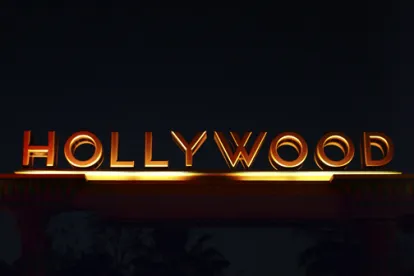On October 21, 2014, Frank Sivero, an actor who played Frankie Carbone in Goodfellas, filed a $250 million lawsuit against Fox and Abram Groening, the co-creator of The Simpsons, claiming that the wiseguy “Louie” character on The Simpsons is an appropriation of his likeness and an infringement on his right of publicity. The actor claims that The Simpsons writers modeled Louie on Sivero’s Frankie Carbone character.
Frank Sivero in "Goodfellas"
 |
Although there are arguably some visual similarities, as shown above, the suit highlights a unique topic in rights of publicity claims—does the unauthorized use of fictional characters violate a real-life individual’s right of publicity? Unsurprisingly, this topic has not been highly litigated. The answer based on the sparse case law is…maybe.
First, a bit of background. Right of publicity claims arise from the use of another’s likeness (or voice, or persona) for commercial purposes without the individual’s authorization. The right of publicity claim was a common law tort, though it has been codified in many states, including California[1], where the Sivero suit was filed. All of the states’ right of publicity laws are subject to federal constitutional limitations under the First Amendment.
 |
In the few cases that have examined whether unauthorized use of a fictional character gives rise to a right of publicity claim, the courts have focused on whether the character is closely associated or “inextricably identified” with a real-life individual.
In Wendt v. Host Intern., Inc. 125 F.3d 806 (9th Cir. 1997) two actors who appeared in the television series Cheers, George Wendt (“Norm Peterson”) and John Ratzenberger (“Cliff Clavin”) sued Host International, a company that operated airport bars, alleging violation of their rights of publicity. Host had licensed copyrights and trademarks from the owners of the Cheers series, enabling the company to open Cheers-themed bars. Each bar featured two animatronic robots that were dressed similarly to the characters of Norm and Cliff from the series. The district court granted summary judgment in favor of the defendants, concluding that the robots did not look like the actors and that no reasonable jury could find otherwise. Id. at 809-10. The Ninth Circuit reversed this grant of summary judgment. In response to the defendants’ argument that the robots merely appropriated the identities of the Cheers characters Norm and Cliff, the court found that the physical likeness to the plaintiffs was still at issue. “While it is true that appellants’ fame arose in large part through their participation in Cheers, an actor or actress does not lose the right to control the commercial exploitation of his or her likeness by portraying a fictional character.” Id. at 811. Thus, there were material facts “that might cause a reasonable jury to find [the robots] sufficiently ‘like’ the appellants.” Id. at 810.
In the case of McFarland v. Miller, 14 F.3d 912 (3d Cir. 1994), the widow of the late actor George McFarland continued a lawsuit begun during his lifetime against a restaurant named “Spanky McFarland’s,” for infringement of his right of publicity. McFarland was a child actor in the “Our Gang” series, a popular short subject comedy series shown in movie theaters from the 1920s to the 1940s, thereafter on television, and later revived under the name of the “Little Rascals.” McFarland played the character “Spanky.” The district court dismissed McFarland’s case on summary judgment, in part, because it found that an actor who portrays a character has no proprietary right in commercial exploitation of the character. The Third Circuit, applying New Jersey law, reversed the finding, holding that there was evidence on the record that “show[ed] that the name Spanky McFarland ha[d] become so identified with McFarland that it could be considered his own name or the name of a character so associated with him as to be indistinguishable from him in public perception.” Id. at 914. It therefore, remanded the case in order to determine whether Spanky McFarland is inextricably linked to the name and image of George McFarland.
Given this case law, apart from proving that the “Louie” character is in fact modeled from the “Frankie Carbone” character, in order to win a right of publicity claim, Sivero will need to show that the “Frankie Carbone” character is so identified with Sivero as to be indistinguishable from him in public perception. In other words, Sivero will need to prove that he played the Carbone role so distinctively and uniquely that that particular characterization is indelibly linked with him. Sivero likely has a tough road ahead of him.
[1] See Cal. Civ. Code § 3344. California allows for a single plaintiff to bring both a common law right of publicity claim and a statutory claim under § 3344.




 />i
/>i

